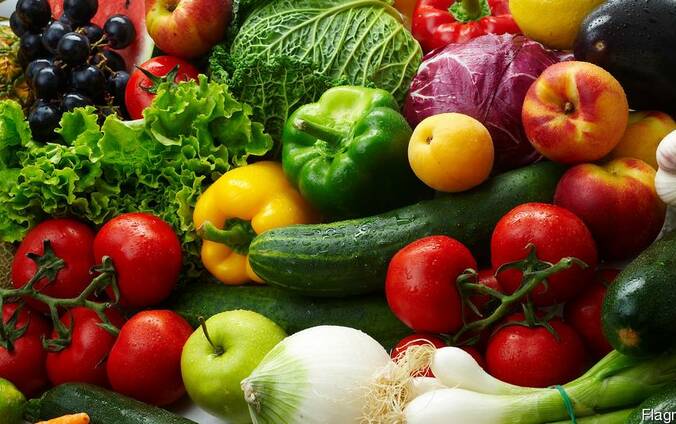In order for you to be able to shop healthily, you don’t have to pay much attention to it. In this article we show you seven tips that can help you with your weekly shopping.
Shopping for a healthy diet is a matter of knowledge and habit. Once you know how it works, shopping will be easier for you and you will know what you need without having to think too much.
Healthy shopping Tip 1: Pay attention to the quality

The quality of the food is the basis for healthy shopping. We recommend you to choose organic quality food. In this way you can avoid chemical-synthetic pesticides and support more sustainable agriculture.
Organic products are subject to specific and controlled guidelines. The aim is to do business in harmony with nature as far as possible and to promote biodiversity and the ecological system as a whole. In addition to the EU organic seal, concentrate on the three stricter seals Demeter, Bioland and Naturland so that you can keep track of the seal jungle.
You should keep an eye on this especially if you consume animal products. The guidelines for animal husbandry, but also for other foods, are formulated more precisely and in a way that is more species-appropriate than for conventional products.
Healthy shopping Tip 2: Cover certain food groups
By focusing on specific food groups, you support a balanced diet with fewer highly processed products. Vegetarian food groups include:
Cereals, cereal products and potatoes
vegetables
fruit
milk and milkproducts
eggs
legumes
nuts and seeds
Oils and fats
water
If you eat vegan, then the animal products are also omitted. In addition to vegetables and fruit, pay particular attention to legumes, nuts and seeds. To make it easier for you to shop healthy, you can keep the vegetarian or vegan food pyramid in mind when creating your shopping list and compare your list with it.
Healthy shopping Tip 3: Use seasonal fruit and vegetables as a guide
If you orient part of your shopping towards seasonal foods, then you ensure variety and diversity in your diet all year round. Our seasonal calendar can give you an overview. If you also pay attention to regionality, then you can not only make your purchase healthy, but also particularly sustainable. Because you avoid long transport routes.
Healthy shopping Tip 4: Integrate fermented foods
Fermentation is a traditional preservation process to preserve food for a longer period of time. Fermented foods have a number of advantages, particularly in terms of nutritional physiology. Because the food is “pre-digested”, they can be easier for you to digest and support your intestinal flora with certain bacteria, such as lactic acid bacteria. They also provide additional nutrients because fermentation increases the amount of vitamins C and B, for example. Fermented foods include:
Sour Dough Bread
active yogurt
kefir
active sauerkraut
kimchi
tempeh
fermented tofu
miso paste
fermented garlic
Healthy shopping Tip 5: Prepare a shopping list
Doing your weekly shopping with a shopping list has several advantages:
You avoid the inconvenience of forgetting a product when making your purchase.
By writing down foods and planning out recipes, you can automatically incorporate more variety into your healthy shopping through more clarity and structure. If you more or less stick to your list, you might find it easier to avoid resorting to unhealthy products.
You save time when shopping and don’t have to worry about whether you’ve thought of everything.
Healthy shopping Tip 6: Don’t go shopping when you’re hungry
“Never go shopping on an empty stomach” – you’ve probably heard this sentence before. This tip is no secret and yet very effective. When you shop hungry, you can tend to shop for more than you need and in unhealthier ways. If, on the other hand, you go shopping comfortably full, you can concentrate better and more clearly on healthy shopping.
Healthy shopping Tip 7: Dare to experiment with every weekly purchase

To add some fun and variety to your shopping, you can set yourself a small challenge for each weekly purchase. For example, you can buy a type of fruit and vegetable that you have never tried before – for example a black salsify? Then learn how to cook them. You can also try to replace a non-regional product on your shopping list with a regional product.





